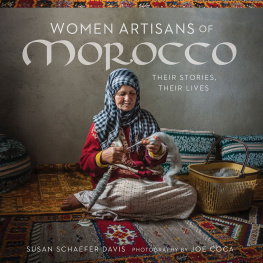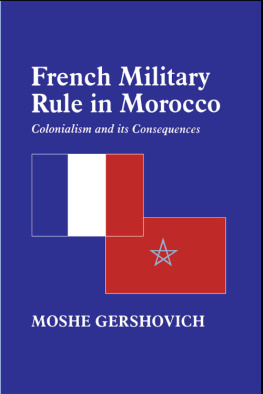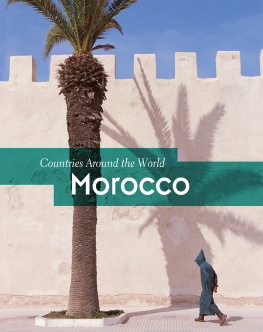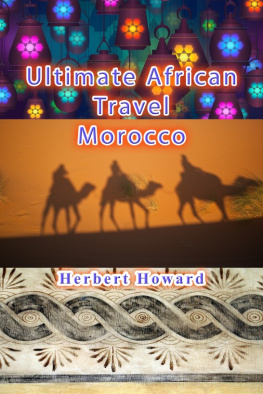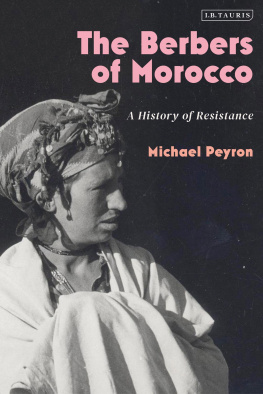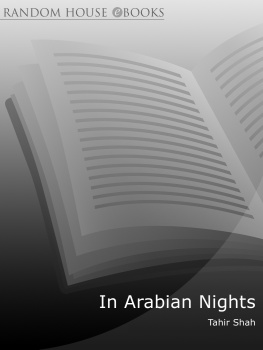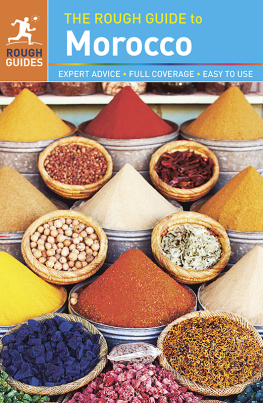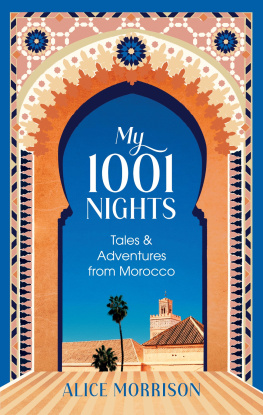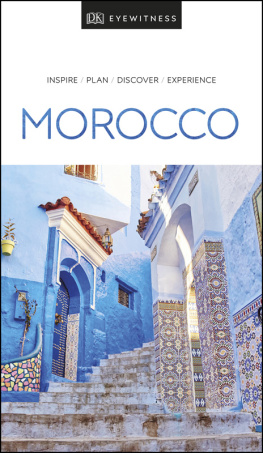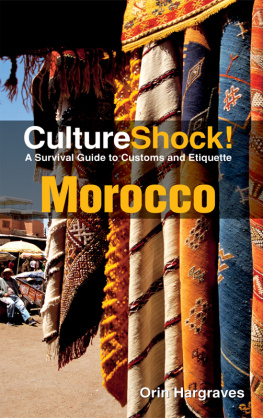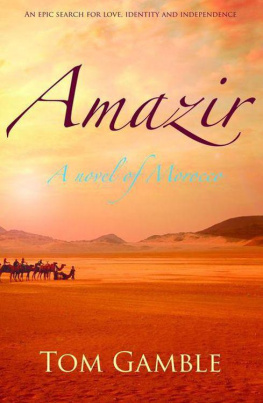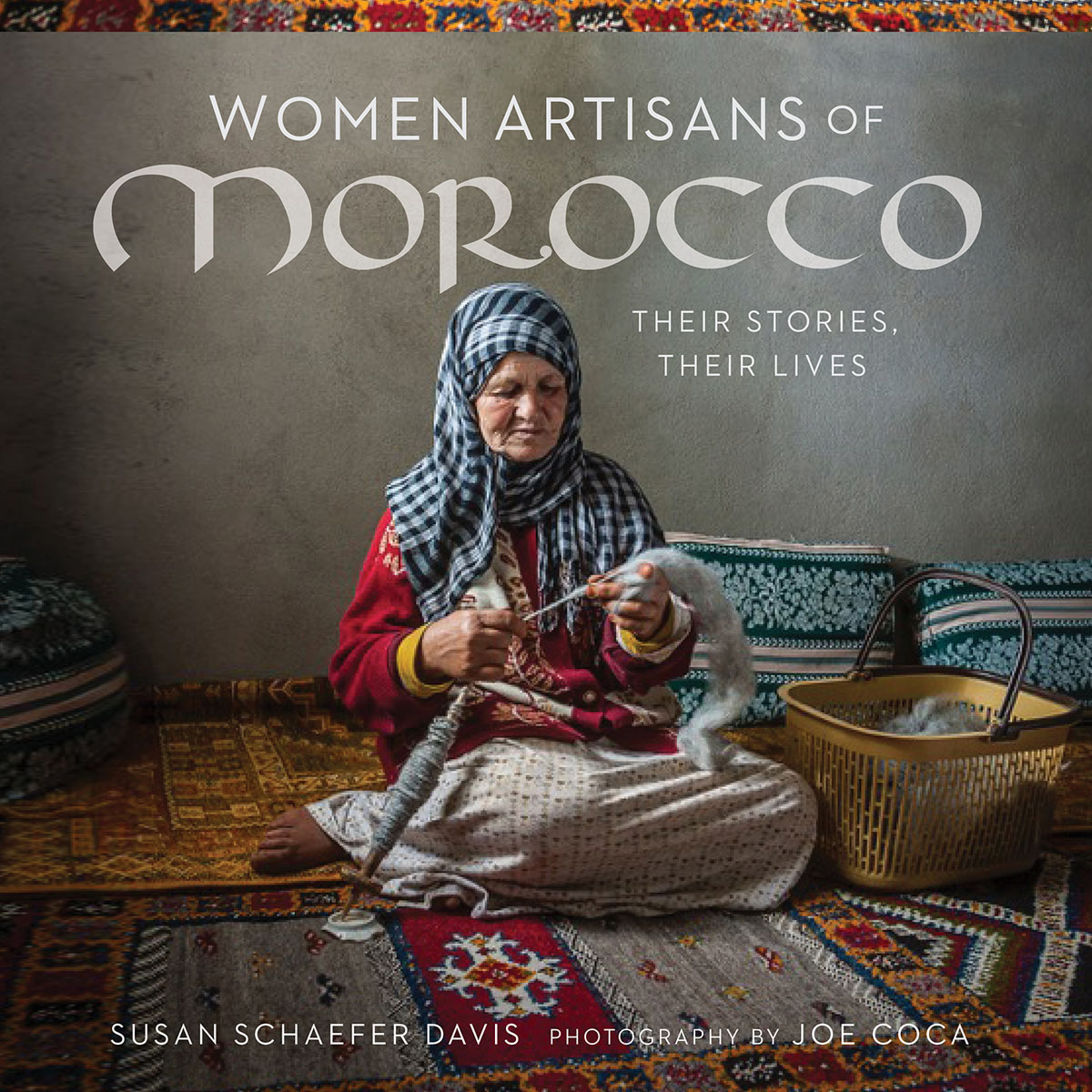
MOROCCO: Ancient cities, adobe fortresses of centuries past, fertile plains of wheat and olives, carpets of wild-flowers, endless deserts, wild mountains, and isolated rural villages. And, of course, the fabled open-air markets framed with stacks of woven rugs and other handicrafts, exotic scents wafting through the aisles, the hum of Arabic, Berber, French. Within this diverse land and confluence of cultures, many rich and ancient craft traditions carry onwomen spin and weave, make buttons, embroider designs passed down through generations, and sew stunning native costumes. Women Artisans of Morocco tells the stories of twenty-five women who practice these textile traditions with an inspiring energy, pride, and fortitude. For the first time, we have a book that focuses on the artisans of Morocco themselves, those who produce these beautiful textiles that contribute substantially to their familys income while maintaining households and raising children.
You will step into the lives of these Moroccan women artisans and gain an appreciation for their artistic skills and ingenuity but also for their strong roles in this supposedly male-dominated society, their fierce independence and determination as they work to improve their economic livelihoods. You will be welcomed into their homes in rural Berber villages, in bustling cities, and in a remarkable desert oasis. You will begin to learn truly what it is like to live as a woman in Morocco and to be part of a rapidly changing society. Most of the women presented here are rug weavers whose ancient skills and designs vary from region to region. You will also meet Fes embroidery artists, women who needle-weave buttons that have decorated native costumes for centuries, and a contemporary seamstress. Joe Cocas award-winning photography, guided by his curious and reverent sensibility, captures the beauty of the women, their work, and Morocco.
186 photographs
Editor: Carol Karasik
Publisher: Linda Ligon
Associate Publisher: Karen Brock
Design: Michael Angelo Signorella
Text 2018 Susan Schaefer Davis
Photography, except as noted 2018 Joe Coca
Cover image: Aicha Seqqat, president of the Timnay Association of weavers in Nkob, Morocco

306 North Washington Avenue
Loveland, Colorado 80537
USA
Printed in China by Asia Pacific
Library of Congress Control Number: 2017954858
ACKNOWLEDGEMENTS
My parents got me started on the path that led to this book, my father by teaching me to be curious and my mother by showing me how to see and appreciate beauty.
I thank them, and all the others who have contributed.
The Peace Corps sent me to Morocco to work in a rural womens center in 1965, and that connection with Morocco and her women was a real gift, one thats lasted all my life. Moroccan women, especially the rural ones, have motivated me to work with them as an academic, a development consultant, and a project founder, selling their rugs. One of the first was Aicha Qasm, who came to the womens center. Their wisdom, strength, warmth, humor, and skills continually inspire me. The women who shared their stories made this book possible.
Other women who have inspired me are the members of Weave A Real Peace (WARP) http://weavearealpeace.org, a group whose mission is to foster a global network of enthusiasts who value the importance of textiles to grassroots economies. Their annual meetings, usually in the U.S., provide face-to-face contact with about thirty to fifty women with an interest in worldwide textiles as well as talks and workshops on a local textile tradition. I always leave feeling invigorated. Deborah Chandler was the founder, and she and the late Alice Brown are two of these inspiring women.
Another inspirational member of WARP is Linda Ligon, publisher of this series of books. Her enthusiasm and dedication are making possible an archive of information on weavers lives and textile work in many cultures, and I thank her for inviting me to participate. Photographer Joe Coca was a joy to work with, enjoying Moroccan cultureand cuisineand charming the artisans and their children. Naoual Ouakrim translated when I interviewed the southern Tashelhit (Berber-speaking) women, allowing me to communicate with them in depth for the first time, although I had known them for years. Later in the process, my editor Carol Karasik really helped me to enliven the text, and Lindas associate publisher Karen Brock was very helpful and supportive as the project drew near a close.
Dan Driscoll, the founder of the national cooperative Anou, and his team of artisans are implementing a model that empowers Moroccan artisans to sell their products using smartphones, even if they are illiterate. Anou allows the artisan, not a middleman, to profit from her work. This enlarges the vision I had when I began MarrakeshExpress.org, and I am very grateful that this work is being carried on.
My husband Douglas and daughter Laila have always supported my work in Morocco, living there for long stretches, learning Arabic, and loving the people; its been wonderful to have them involved. My Moroccan daughter Halima Benayad was born there but now lives in the United States and was especially helpful in understanding many of the interviews, including the meanings and subtle senses of certain words. Her friend Khadija Izghi was very helpful with rug terms.
I feel very lucky to have had the support of all these people, who have helped make this book possible.

INTRODUCTION
MOROCCO IS A FEAST FOR THE SENSES . Ancient cities and villages resound with the music of oud and flute, exotic aromas waft from secret doorways as women draped in dusty rose and sky blue go about their daily chores, sometimes wearing under these robes spangled gowns for weekend festivals. Even the horses are decorated in lavish trappings for festivals. Pattern is everywhere, in the neatly stacked vegetables in street stalls and inside houses, embellishing pottery, tile mosaics, brass work, and carved wood. Geometric rug designs are underfoot, softening the tile floor, warming families in winter. Stars are stitched into embroidered clothes and buttons. Much of this intricate geometry is created by women.
For a taste of their varied artistry, wander through the souks, the weekly open-air markets where weavers often sell their latest work. Of course, most people are there to purchase basic household needs. Rural families grow their own wheat or olives but depend on the markets that circulate from town to town for mint, chickpeas, dates, and fresh meat and vegetables. Aside from tasty foodstuffs, the traveling merchants often haul in manufactured goods to sell from their makeshift stalls; among the charcoal braziers and spices are stacks of imported kitchen gadgets, used clothing, or tools. Meanwhile a vendor with a microphone is extolling his cure for bedbugs, barbers are cutting mens hair, tailors are stitching dresses on their treadle sewing machines, dentists are pulling teeth, and herbalists are treating the sick. Just past the spot where the water seller is filling a customers brass cup stand the stalls where weavers are buying supplies: raw and spun wool, white or dyed; synthetic warp threads; twisted yarn from unraveled sweaters, used for making rag rugs. The next stall is the place to purchase hand cards, combs, beaters to pound the wool weft, and special scissors to trim rug surfaces.
Next page
